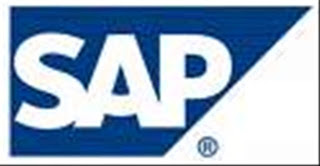
posted by: drishya subash
The SAP ERP application is an integrated enterprise resource planning (ERP) software manufactured by SAP AG that targets business software requirements of midsize and large organizations in all industries and sectors. It allows for open communication within and between all company functions.
SAP stands for Systems, Applications and Products (Systeme, Anwendungen und Produkte in the original German) in Data Processing. It uses the concept of modules ("individual programs that can be purchased, installed, and run separately, but that all extract data from the common database"). SAP AG, the company that provides the enterprise resource planning solution has upgraded the package and launched it as SAP ECC 6.0 in 2005. ECC stands for ERP Central Component. The purpose of positioning it as ECC is to enable SAP to build and develop an environment of other products that can function upon the foundation of the central component.
SAP's ERP solution includes several modules that support key functional areas - some of them are -
- SAP ERP Financials
- SAP ERP Logistics
- SAP ERP Human Resource Management
The evolution of mySAP ERP
SAP R/3 through version 4.6c consisted of various applications on top of SAP Basis, SAP's set of middleware programs and tools.
When SAP R/3 Enterprise was launched in 2002, all applications were built on top of the SAP Web Application Server. Extension sets were used to deliver new features and kept the core as stable as possible. The Web Application Server contained all the capabilities of SAP Basis.
As a result of marketing changes and changes in the industry, other versions of SAP have been released that address these changes. The first edition of mySAP ERP was launched in 2003 and bundled previously separate products, including SAP R/3 Enterprise, SAP Strategic Enterprise Management (SEM) and extension sets. The SAP Web Application Server was wrapped into NetWeaver, which was also introduced in 2003.
A complete architecture change took place with the introduction of mySAP ERP edition 2004. R/3 Enterprise was replaced with the introduction of ERP Central Component (SAP ECC). The SAP Business Warehouse, SAP Strategic Enterprise Management and Internet Transaction Server were also merged into SAP ECC, allowing users to run them under one instance. Architectural changes were also made to support an enterprise services architecture to transition customers to a services-oriented architecture.
More than 2,300 customers are using the latest version of mySAP ERP, since it was released in early 2005, according to SAP. SAP reported a 20% growth in new ERP license deals in the second quarter of 2005.
Deployment and maintenance costs
SAP ERP systems effectively implemented can have cost benefits. Integration is the key in this process. "Generally, a company's level of data integration is highest when the company uses one vendor to supply all of its modules." An out-of-box software package has some level of integration but it depends on the expertise of the company to install the system and how the package allows the users to integrate the different modules.
It is estimated that "for a Fortune 500 company, software, hardware, and consulting costs can easily exceed $100 million (around $50 million to $500 million). Large companies can also spend $50 million to $100 million on upgrades. Full implementation of all modules can take years," which also adds to the end price. Midsized companies (fewer than 1,000 employees) are more likely to spend around $10 million to $20 million at most, and small companies are not likely to have the need for a fully integrated SAP ERP system unless they have the likelihood of becoming midsized and then the same data applies as would a midsized company. Independent studies have shown that deployment and maintenance costs of a SAP solution can greatly vary depending on the organization. For example, some point out that because of the rigid model proposed by the SAP tools, a lot of customization code to adapt to the business process may have to be developed and maintained.. Some others pointed out that a return on investment could only be obtained when there was both a sufficient number of users and sufficient frequency of use. Deploying SAP itself can also involve a lot of time and resources.
Advantages and disadvantages of SAP ERP
Advantages:
- ERP allows easier global integration (Barriers of currency exchange rates, language, and culture can be bridged automatically)
- Updates only need to be done once to be implemented company wide
- Provides real-time information, reducing the possibility of redundancy errors
- Creates a more efficient work environment making it easier for employees to do their job which leads to effectiveness
- Vendors have past knowledge and expertise on how to best build and implement a system
- No hardware purchase or maintenance costs
- No developer training costs and the vendor will train the users
Disadvantages:
- Locked into relationship by contract and manageability with vendor - a contract can hold a company to the vendor until it expires and it can be unprofitable to switch vendors if switching costs are too high
- Inflexibility- vendor packages may not fit a company's business model exactly and customization can be very expensive
- Return on Investment may take too long to be profitable
- SAP ERP implementations have a risk of project failure

THANK U MAM..BUT CAN U ADD SOME MORE DETAILS ABOUT THE TRAINING PROGRAMME, FEES, AND OTHER NEEDED THINGS.SO THAT IT WOULD HELP THE INTERESTED PPL
ReplyDelete